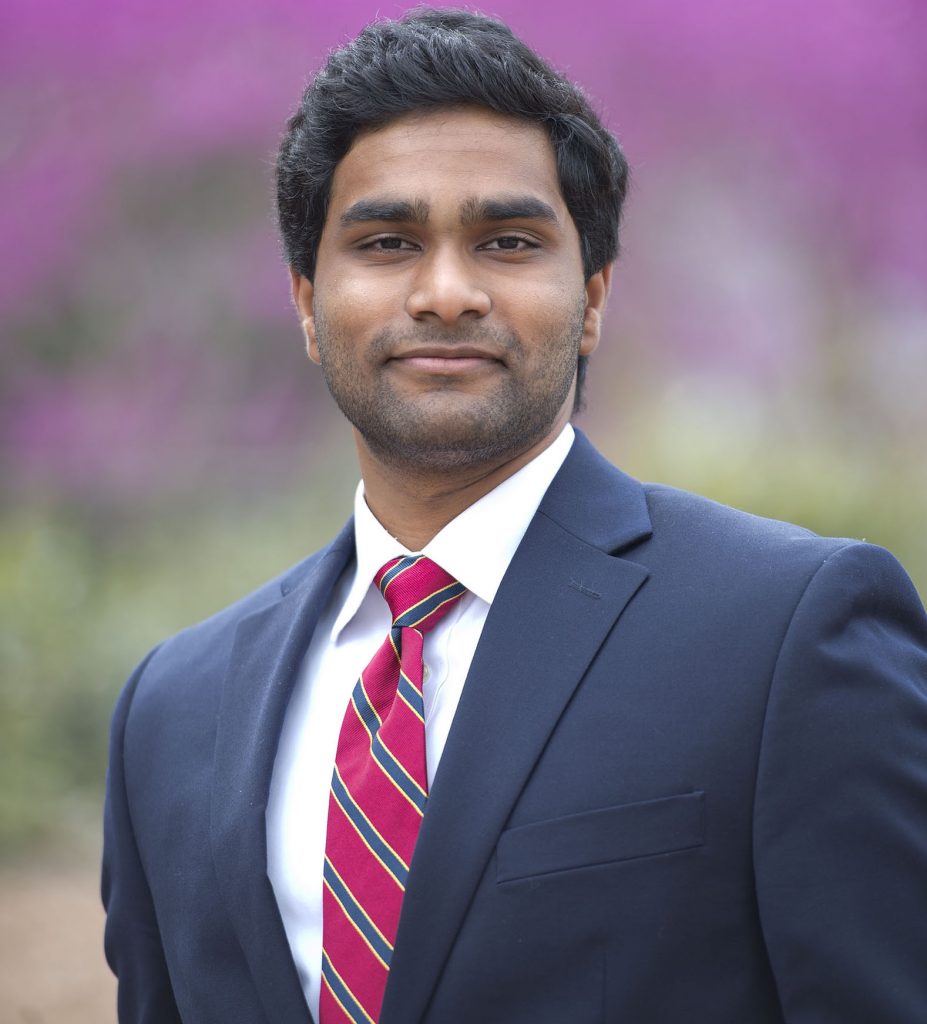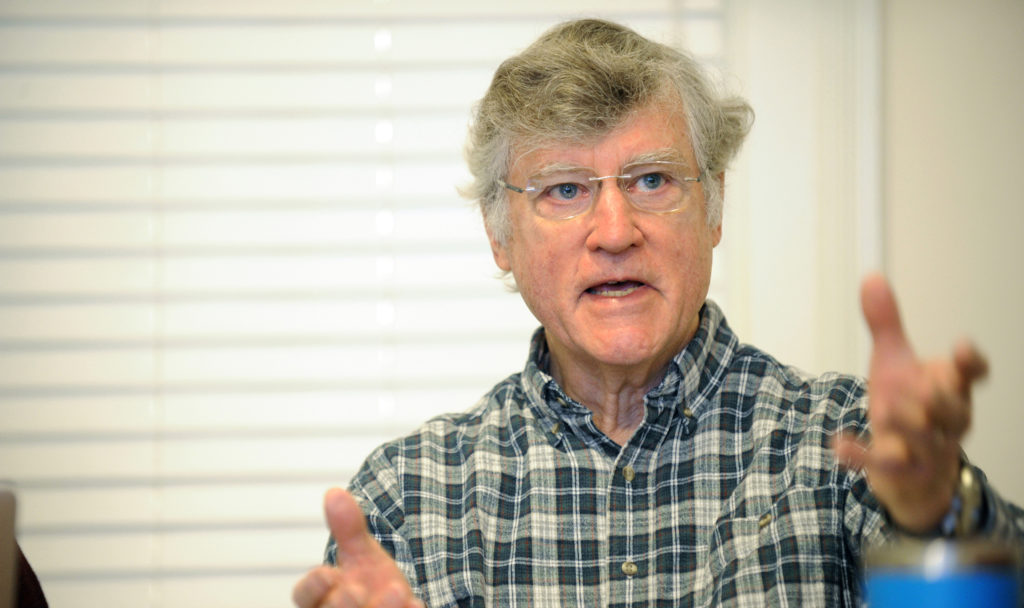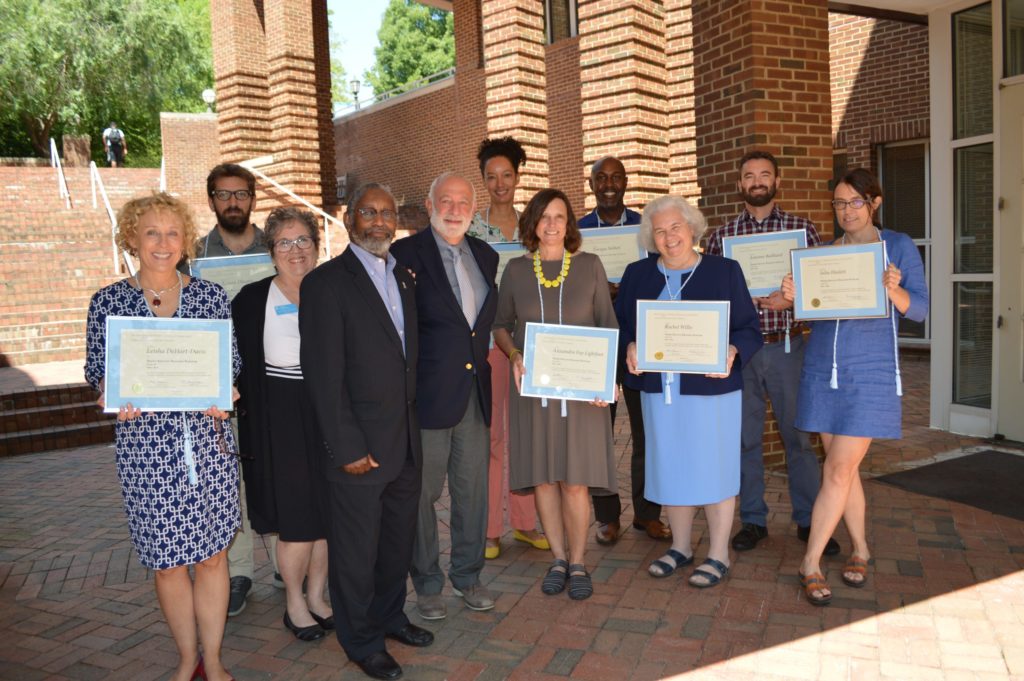Dimes clatter on a table top. Audience members make cat sounds. Ice melts in a cup.
These sounds are fodder for the UNC students who compose electronic pieces of music in the Electro-Acoustic Studio on the second floor of Hill Hall.
Electronic compositions can create, in a way that you can’t with traditional music, different human experiences and have them juxtaposed in a different way,” said assistant professor of music Stephen Anderson, who teaches advanced composition. “These pieces can have broader implications than standard music does. The challenge is to provoke a moving human experience without having traditional pitches and rhythms be the central focus of the music.”
Anderson and music professor Allen Anderson ask their students to see what they can create with diverse sounds. Students learn that similar to traditional repertoire, electro-acoustic compositions may evoke a sense of forward motion, musical progression, dynamics, cadence and climax, as well as delineate a well-defined formal structure and share a program or storyline.
The pieces also require a degree of collaboration among students and instructors not seen in every classroom. Students bounce ideas off classmates and the professors, use creativity to fuel energy levels, and share computer techniques and listening ears.
“It helps to get other opinions because ears can get tired,” said Lowell Hutcheson, a junior in Stephen Anderson’s class who used dimes to produce the sound she needed for her piece “Cold Hard Cash.” “Fresh ears are helpful to sound creation and sound processing.”
Melding compositional ideas, such as melodic material or structure, with actual nuts-and-bolts technical programs for the laptops to use was inspiring to Alex Van Gils ’10. He took a composition class with Allen Anderson and worked with him and several students on an electronic piece that was performed at a campus festival called Collaborations: Humanities, Art & Technology (CHAT) in February 2010.
“Some of us who are in rock groups are used to the shared group effort,” said Van Gils. “But for composers, the writing process usually is solitary. This collaborative process has more of a democratic feel to it.”
The Electro-Acoustic Studio, with its arrangement of monitors, speakers, electronic boards, a keyboard and thickets of electronic wiring, provides a cozy space where students can produce finely tuned soundscapes. The computer programs alter, create and process sounds. Junior Vince Webb spent an hour recording melting ice for Stephen Anderson’s composition class.
Learning runs both ways: Allen Anderson broadened his palette by tapping into his students’ enthusiasm for making music with computers. He didn’t bring the expertise of using the software, but he did bring an energy to learn about it and talk about it that inspired the students.
Van Gils and four other students worked with Allen Anderson on “Cicadas in the Clouds,” which they performed at the CHAT Festival. The piece involved several laptops, a microphone to capture sounds from the audience and a mixing board.
“What we worked out with the software was a way for the sound captured in the microphone to be recorded as a sound file and sent from a hub to the other computers,” Allen Anderson said. “We were a laptop orchestra; there were no instruments on stage. Sounds went into one computer, were captured as sound files, isolated as sound files and then sent over our private network to the other computers. We had a little collection … that we could then play back to the audience.”
In speaking of another collaborative composition, Van Gils said teamwork was essential to the piece from its inception to the performance.
“Rather than, I write a movement, you write a movement, and we put it together, we literally wrote every note of the piece together, discussing and sharing ideas,” Van Gils said.
The experience also gave Allen Anderson a chance to re-examine his role in the partnership between teacher and student.
“What it comes down to for the instructor is [creating] the opportunity for people to feel like they have something to contribute to a project,” he said.
Editor’s note: This story by Don Evans ’80 is part of a package of stories on “Creative Collaborations” in the College of Arts and Sciences featured in the spring ’11 Carolina Arts and Sciences magazine.
Read more “Creative Collaborations” stories: Breathing Relief, Languages Across the Curriculum, Mentoring Chemistry, UNC-Duke N.C. Poverty Project, Globe-Trotting for Tardigrades, Real-Life Ethics, Electro-Acoustic Music, Tangled Up in Blues and Making Waves.



